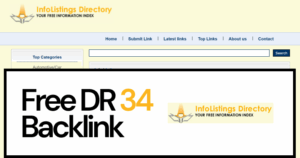Are you ready to take your blogging to the next level? In today’s fast-paced digital world, automated blog posts can be a game-changer for your content strategy. By leveraging the power of automation, you can save time, maintain a consistent posting schedule, and boost your productivity. But it’s not just about setting up a few automated posts and calling it a day. To truly elevate your blogging game, you need to master best practices for automated blog posting, optimize your content for SEO, and create engaging, high-quality content that resonates with your audience. In this guide, we’ll explore everything you need to know about automated blog posting, from the benefits and best practices to the tools and future trends that will shape the way we create and consume content online. So buckle up and get ready to revolutionize your blogging game with the power of automation!
Benefits of Automated Blog Posts
Automated blog posts are a game-changer when it comes to saving time and increasing productivity. With automated posting, you can schedule your content in advance, freeing up valuable time to focus on other important aspects of your blog. Whether you’re a busy professional or a full-time blogger, automating your posts allows you to stay on top of your content calendar without the stress of last-minute publishing. This time-saving feature lets you maintain a consistent posting schedule, keeping your audience engaged and coming back for more.
Consistency is key in the blogging world, and automated posts make it easy to maintain a regular publishing schedule. By scheduling your content in advance, you can ensure that your blog remains active and relevant, even during busy or hectic times. This consistent posting schedule not only keeps your audience engaged but also helps improve your blog’s search engine ranking. With automated blog posts, you can stay ahead of the game and establish yourself as a reliable source of information in your niche.
In addition to time-saving and consistency, automated blog posts can significantly increase your productivity. By setting aside dedicated time to create and schedule your content, you can streamline your workflow and focus on producing high-quality, engaging posts. This increased productivity allows you to allocate more time to strategic planning, research, and audience engagement, ultimately enhancing the overall success of your blog. With automated posts, you can elevate your blogging experience and maximize your impact in the online community.
Best Practices for Automated Blog Posting
Automated blog posting is a game-changer when it comes to managing a successful blog. By utilizing relevant keywords in the content, you can ensure that your automated posts are reaching the right audience. Take the time to research and identify the most effective keywords for your niche, and incorporate them into your posts. This will not only help improve your blog’s visibility in search engine results, but also attract more organic traffic to your website.
Customizing the scheduling of your automated blog posts is another crucial practice to elevate your blogging game. Consider your audience’s peak engagement times and schedule your posts accordingly. This will maximize the reach and impact of your content, ensuring that it is being seen by the right people at the right time. Additionally, by staggering the scheduling of your posts, you can maintain a consistent presence on your blog without overwhelming your audience with too much content at once.
Regularly monitoring the performance of your automated blog posts is essential for refining your blogging strategy. Utilize analytics tools to track the engagement, traffic, and conversions generated by your automated posts. By analyzing this data, you can identify trends, patterns, and areas for improvement. This insight will enable you to continuously optimize your automated blog posting strategy, ensuring that your content is resonating with your audience and driving the desired results.
SEO Optimization for Automated Blog Content
When it comes to optimizing your automated blog content for SEO, one of the most crucial aspects is focusing on meta tags. Meta tags play a significant role in helping search engines understand the content of your blog posts. By ensuring that your automated posts have relevant and well-crafted meta tags, you can improve their visibility and ranking in search engine results. This means paying attention to meta titles, descriptions, and keywords to accurately reflect the content of your blog posts. Additionally, utilizing relevant meta tags can also enhance the click-through rate of your automated blog posts, driving more organic traffic to your site.
Another essential aspect of SEO optimization for automated blog content is to optimize images. Including high-quality and relevant images in your blog posts can significantly enhance the user experience and engagement. However, to ensure that these images contribute to your SEO efforts, it’s crucial to optimize them properly. This includes using descriptive file names, incorporating alt tags with relevant keywords, and compressing images to improve page load speed. By following these image optimization best practices, you can make your automated blog posts more visually appealing while also boosting their SEO performance.
In addition to meta tags and image optimization, implementing an effective internal linking strategy is vital for SEO optimization of automated blog content. Internal linking helps search engines understand the structure and hierarchy of your website, as well as the relevance and context of your blog posts. By strategically linking to other relevant pages and blog posts within your site, you can distribute link equity and drive traffic to important pages. This not only improves the overall SEO performance of your site but also enhances the user experience by providing additional valuable content. Therefore, as you automate your blog posts, be sure to incorporate an internal linking strategy to maximize their SEO impact.
Tools for Efficient Automated Blog Posting
Are you tired of spending countless hours manually posting content on your blog? Say goodbye to the tedious task of updating your blog with the latest content, thanks to the availability of various tools for efficient automated blog posting. With the help of content management systems such as WordPress, Blogger, and Drupal, you can easily schedule and automate your blog posts, freeing up your time to focus on creating quality content. These user-friendly platforms allow you to set the date and time for your posts to go live, ensuring that your blog remains active even when you’re not around.
In addition to content management systems, social media scheduling tools play a crucial role in automating your blog posts. By integrating your blog with popular social media platforms such as Facebook, Twitter, and Instagram, you can automatically share your latest blog posts with your followers. This not only saves you time but also helps to increase the visibility of your content across different channels. With just a few clicks, you can schedule posts to be shared at optimal times, maximizing engagement and driving traffic to your blog.
Furthermore, the use of SEO plugins can significantly enhance the efficiency of your automated blog posting. These plugins help to optimize your blog posts for search engines, ensuring that your content ranks high in search results. By automatically generating meta tags, optimizing images, and suggesting relevant keywords, SEO plugins streamline the process of publishing blog posts. This not only saves you time but also helps to attract more organic traffic to your blog, ultimately increasing your reach and influence in the digital sphere.
Creating Engaging Automated Blog Content
Are you ready to take your blogging to the next level? With automated blog posts, you can create engaging content that will keep your readers coming back for more. One way to do this is by utilizing storytelling techniques in your automated posts. By crafting compelling narratives, you can draw your audience in and keep them hooked from start to finish. Whether you’re sharing personal anecdotes or creating fictional stories, storytelling is a powerful tool for captivating your readers.
In addition to storytelling, incorporating multimedia elements into your automated blog posts can also elevate the content. Visuals such as photos, infographics, and videos can help to break up the text and make your posts more visually appealing. Not only does this enhance the overall reading experience, but it also allows you to convey information in different ways, catering to a wider audience. By mixing up your content with multimedia elements, you can keep your readers engaged and coming back for more.
Furthermore, consider adding interactive features to your automated blog posts. This could include quizzes, polls, or interactive charts that encourage reader participation. By allowing your audience to interact with your content, you can create a more dynamic and engaging experience. Not only does this keep your readers actively involved, but it also provides valuable insights into their preferences and interests, allowing you to tailor your content to better suit their needs.
Measuring Success of Automated Blog Posts
One of the most exciting aspects of using automated blog posts is the ability to measure their success through various metrics. Traffic analytics play a crucial role in determining the reach and impact of your posts. By analyzing the number of visitors, page views, and referral sources, you can gain valuable insights into the performance of your automated content. This data allows you to identify trends, patterns, and areas for improvement, ultimately helping you optimize your blog for maximum visibility and engagement.
In addition to traffic analytics, user engagement metrics provide valuable feedback on the effectiveness of your automated blog posts. Metrics such as average time on page, bounce rate, and social shares can give you a deeper understanding of how your audience is interacting with your content. By tracking these metrics, you can evaluate the level of interest and relevance of your automated posts, and make informed decisions on content strategy and optimization. Furthermore, user engagement metrics can help you identify high-performing posts and replicate their success, ultimately enhancing the overall impact of your blog.
Finally, conversion tracking is a key component in measuring the success of automated blog posts. Whether your goal is to drive sign-ups, downloads, or sales, tracking conversions allows you to assess the effectiveness of your content in achieving desired outcomes. By analyzing conversion rates, click-through rates, and other relevant metrics, you can gain insights into the impact of your automated posts on your business objectives. This data enables you to refine your content strategy, optimize your calls-to-action, and ultimately drive more valuable actions from your audience.
Automated Blog Post Maintenance and Updates
Are you tired of spending countless hours maintaining and updating your blog posts? Say goodbye to the tedious manual work and hello to Automated blog post maintenance and updates! With automated tools and software, you can easily schedule regular content audits to ensure your posts are always up to date and relevant. No more worrying about outdated information or missing out on SEO changes – automation takes care of it all for you.
Imagine the freedom of being able to focus on creating new content, engaging with your audience, and growing your blog, without having to constantly check and update each individual post. Automated blog post maintenance allows you to set it and forget it, knowing that your content is being regularly reviewed and optimized without any extra effort on your part. It’s like having a dedicated team of experts working behind the scenes to ensure your blog is always in top shape.
Not only does automated blog post maintenance save you time and effort, but it also helps improve the overall quality of your blog. By consistently reviewing and updating your content, you can ensure that your posts remain valuable and informative to your readers. Plus, with automated SEO changes, you can boost your blog’s visibility and reach a wider audience. So, take the leap and elevate your blogging experience with automated posts today!
Avoiding Common Pitfalls of Automated Blog Posting
Automated blog posting can be a powerful tool for bloggers to save time and increase their online presence. However, it’s important to be mindful of potential pitfalls that can arise from relying too heavily on automation. One common issue is the risk of duplicate content, which can negatively impact your search engine rankings. Search engines like Google prioritize original and high-quality content, so using automated tools to generate duplicate posts can harm your blog’s visibility. To avoid this, be sure to use automated posting as a supplement to your original content, rather than a replacement.
Another pitfall to watch out for is over-reliance on automation. While it’s tempting to automate as much of the blogging process as possible, it’s crucial to maintain a human touch. Automated posts should be used to enhance your blog, not take over. Make sure to regularly review and edit your automated content to ensure it aligns with your blogging goals and resonates with your audience. By maintaining a balance between automation and personalization, you can avoid the trap of losing the unique voice and perspective that sets your blog apart.
Lastly, don’t overlook the importance of user feedback when using automated blog posting. It’s easy to become disconnected from your audience when relying heavily on automation. Take the time to engage with your readers, respond to comments, and gather input on the type of content they find most valuable. This will help you fine-tune your automated posting strategy and ensure that it continues to meet the needs and interests of your audience. By staying attentive to user feedback, you can use automation to elevate your blogging experience, rather than detract from it.
Future Trends in Automated Blog Content Creation
The future of blogging is here, and it’s all about automated content creation. With the rise of AI-powered tools, bloggers can now generate high-quality posts with just a few clicks. These advanced systems can analyze data, identify trends, and even mimic human writing style, making it easier than ever to produce engaging and relevant content. Gone are the days of spending hours brainstorming and writing – now, bloggers can streamline their workflow and focus on other important aspects of their business.
Voice search optimization is another exciting trend in automated blog content creation. As more and more people turn to voice assistants like Siri and Alexa to search for information, it’s crucial for bloggers to optimize their content for voice search. Automated tools can help bloggers identify the most common voice search queries in their niche and create content that is tailored to these queries. By staying ahead of the curve and embracing voice search optimization, bloggers can ensure that their content remains accessible and relevant to a wider audience.
Personalized user experiences are also set to become a key focus in automated blog content creation. With the help of AI and machine learning, bloggers can now deliver personalized content recommendations to their readers based on their browsing history, preferences, and behavior. This not only enhances the user experience but also increases engagement and conversion rates. By harnessing the power of automated tools to deliver personalized content, bloggers can build stronger connections with their audience and keep them coming back for more.
Are you tired of spending hours creating and optimizing content for SEO? Say goodbye to manual content creation and SEO optimization with Abun. Our platform allows content creators and marketers to automate their workflow and generate high-quality, SEO-optimized content that drives organic traffic to their website. With Abun, you can streamline your content creation process and focus on other aspects of your business. Sign up for early access now and revolutionize the way you create and optimize web content for SEO.
Frequently Asked Questions
1. What is automated posting?
Automated posting is the process of scheduling and publishing blog posts at predetermined times using specialized software or tools.
2. How can automated posting benefit my blog?
Automated posting can help maintain a consistent posting schedule, increase productivity, and reach a wider audience by posting at optimal times.
3. What are some popular tools for automated posting?
Some popular tools for automated posting include Hootsuite, Buffer, and Sprout Social.
4. Is automated posting suitable for all types of blogs?
Automated posting is suitable for most types of blogs, but it’s important to ensure that the content and timing align with your audience’s preferences.
5. How can I ensure the quality of content with automated posting?
You can maintain content quality with automated posting by carefully curating and scheduling posts, and regularly reviewing and updating your posting schedule.
“Automated blog posting can save time and increase productivity by providing a consistent posting schedule. By utilizing relevant keywords, optimizing images, and focusing on meta tags, you can improve SEO for your blog content. Tools and best practices for efficient automated posting, as well as measuring success and avoiding common pitfalls, are also discussed. The future trends in automated blog content creation, including AI-powered content generation and personalized user experiences, are also explored.”



